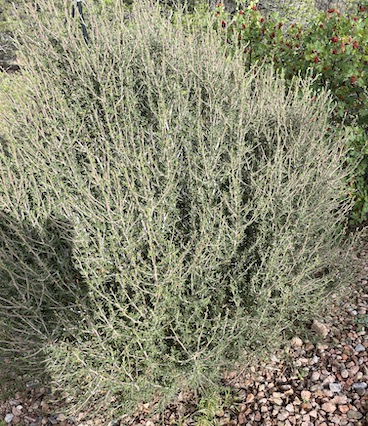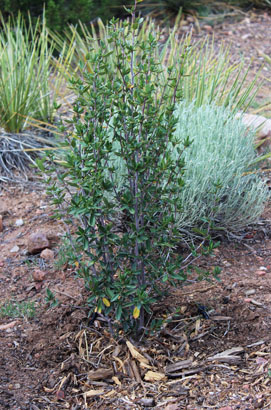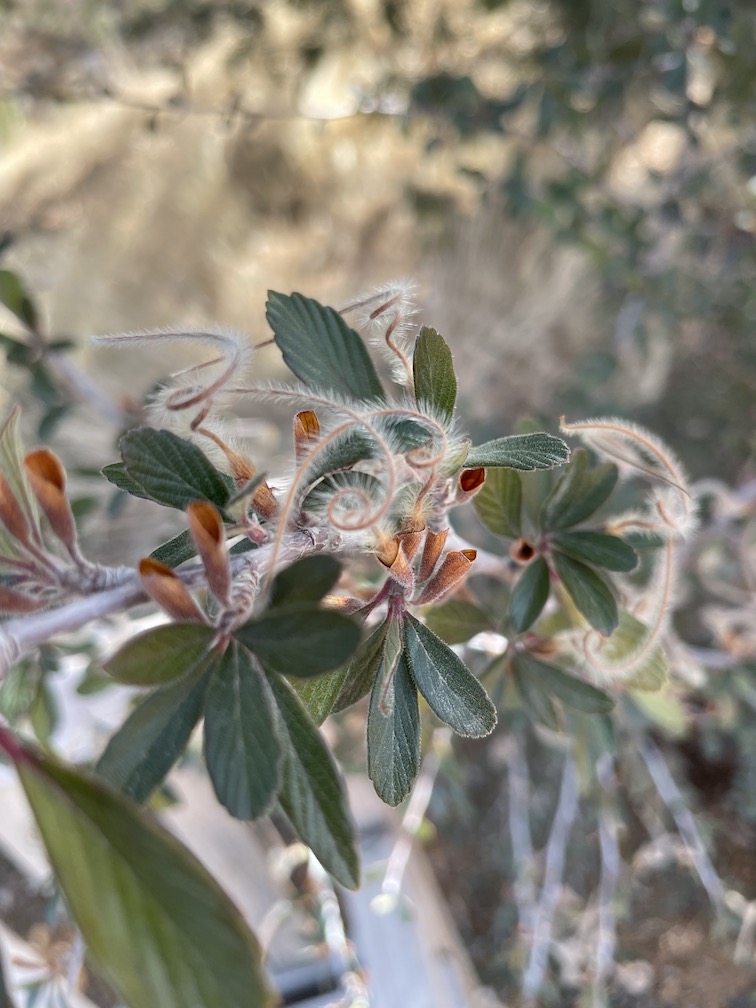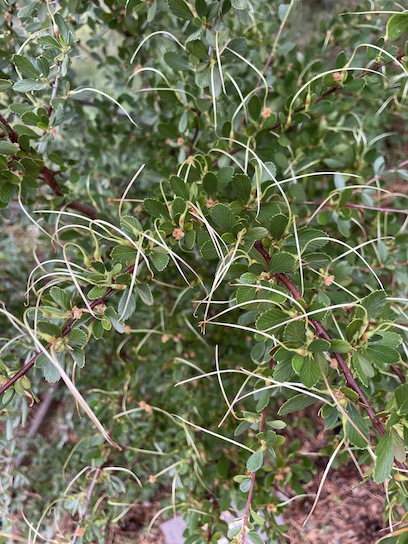Mahogany, True Mountain - Cerocarpus montanus
(Hard Tack, Palo Duro, Palo Ludo)
Medicine:
"People from some of the northern pueblos once drank a mixture of ground leaves and cold water for a laxative, and the Acomas used to make some kind of medicinal tea from the boiled leaves." (Dunmire and Tierney 137)
"A handful of the twigs are boiled for a half-hour and drunk as a laxative or as an aid in shrinking inflamed but not bleeding hemorrhoids or an inflamed prostate gland. In New Mexico the whole leafy branches are placed under mattresses to repel chinches - bedbugs." (Moore 112)
"The Navajo drank an extract of mountain mahogany when they ate too much (an early Alka-Selzer!), and the pulverized leaves were sprinkled in water and drunk for a laxative. An extract was also given to women to help them recover from childbirth. The Kawaiisu of California boiled the roots and drank the decoction as cough medicine." (Finley and Nieland 333)
"(Keres, Western) Infusion of leaves used as a strengthener." (Moerman 149)
Other Uses:
"Perhaps the most widespread and well-known use of mountain mahogany has been to achieve a reddish-brown color for dying moccasins and leggings. A number of pueblos have produced this dye made from boiled bark or sometimes the mashed roots. Charles Lange (1959) described how it was done at Cochiti: 'Shreds of bark are placed in a half-gallon of hot water, to which a tablespoon of lime is added. The color is tested with a white corncob, the more lime used, the darker the color. The suds are spread over the buckskin until it reaches the desired shade.' "(Dunmire and Tierney 137)
"The tannins in the bark were useful in tanning leather, and the roots provided a red dye for wool basket, and buckskin.
The wood produced by this small tree is brittle but very hard. The Acoma and Laguna used the tough thick branches to fashion fire stick spindles. The people of several pueblos used the wood to make arrow points, digging tools, spears, rabbit sticks, and rough brooms. Navajo rug makers still value the wood to make weaving tools." (Finley and Nieland 333)
"(Keres, Western) Dried roots used as a hearth for fires. Wood made into arrow points. Wood made into small tools. Dried sticks used as spindles for fire by friction. (Navajo) Wood used to make the sweat house and male prayer sticks for ceremonies. Wood used to make the handle of the weaving distaff. Wood used to make dice and the sweat house for ceremonies. (Tewa) Wood used to make rabbit sticks." (Moerman 149)
Mahogany, Curl-leaf Mountain - Cercocarpus ledifolius
 |
|---|
| The Bush |
Medicine:
"Gosiute Burn Dressing Poultice of powdered green wood applied to burns. --- Paiute Analgesic Decoction of bark taken for stomachaches. Antidiarrheal Compound infusion of scraped bark given to children for diarrhea. --- Cold Remedy Infusion of bark taken for colds."(Moerman 149)
Other Uses:
"Havasupai Red Inner bark used as a red dye for buckskin. Gosiute Hunting & Fishing Item Wood used for the heads of fish spears. Tools Used as a root digger or camas stick. --- Shoshoni Hunting & Fishing Wood used to make arrow tips." (Moerman 149)
Mahogany, Littleleaf Mountain - Cercocarpus intricatus
(Dwarf Mountain Mahogany, Narrowleaf Mountain Mahogany)
b
The Bush
 |
 |
|---|---|
| The Flower | The Bud |
Description
"Littleleaf mountain mahogany is the shortest of the mountain mahoganies usually sold. Small, narrow, leathery looking evergreen leaves on many intricate branches. Small yellow flowers in springtime and feathery seed plumes in the fall. The shrub is densely branched and slow growing. (High Plains Gardening)
Mahogany, Hairy Mountain - Cercocarpus montanus var. paucidentatus
The Bush Leaves and Flowers
Seeds



